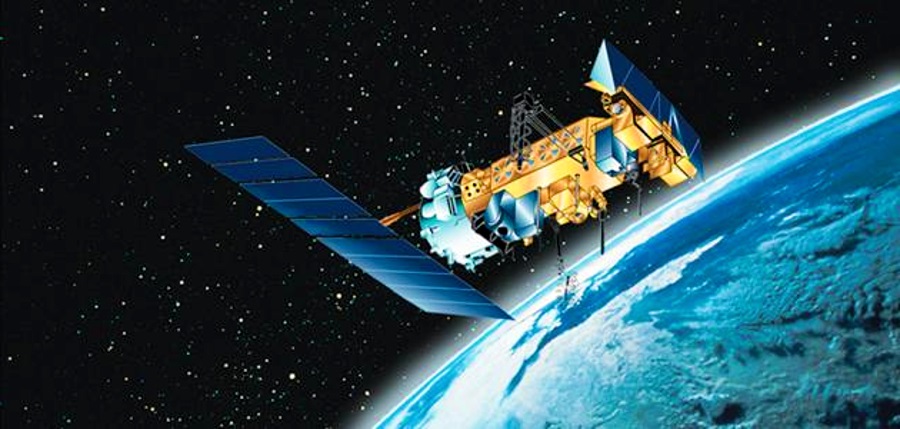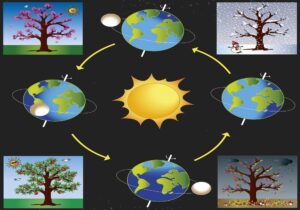Satellites are able to orbit the planet because they are confined to speeds high enough to defeat the gravitational pull downwards. Let’s find out the reason why satellites don’t fall back to earth.

What are satellites?
Satellites can be defined as man-made machines that are launched into space in specific orbits around the Earth, or any other object in it, to carry out many tasks; Such as taking pictures of the Earth, which would help meteorologists predict the weather and track hurricanes, in addition to taking pictures of other planets, the sun, black holes, and distant galaxies. These images help scientists better understand the solar system and the universe.
Many satellites are used in communications. This is to transmit signals to operate television and make phone calls around the world, as it is used in the Global Positioning System (GPS). There is a group of more than twenty satellites to do this task.
The reason why satellites don’t fall to the ground
Satellites can stay in orbit around the planet very quickly, thus maintaining their rotation and not falling due to gravity.
In addition, the satellites carry their fuel supplies to keep the orbit changing in order to avoid collisions with rocky masses, and therefore they are sent into space by a rocket launched from Earth, where it contains enough energy equal to at least 25,039 miles per hour to be outside the atmosphere. When the missile reaches the specified location, the satellite falls into its orbit.
As for the satellite’s speed when separated from the launch vehicle, it is sufficient to keep it in its orbit for hundreds of years. In terms of maintaining its orbit, this is done by balancing two factors, namely:
Gravity: A satellite that revolves around the Earth needs a greater speed to resist the force of gravity.
Speed: The speed it takes to travel in a straight line is measured.
The importance of balance in the orbit of satellites around the Earth
The satellite is launched into space by a rocket. This satellite revolves around the Earth when the speed is balanced through Earth’s gravity. Without balance, it either flies in a straight line into space or falls to the Earth.
It must be noted that satellites orbit the Earth along different paths, altitudes, and speeds.
Satellites orbit around the earth
The most common orbits around which satellites revolve are: the geostationary orbit, and the polar orbit, where fixed satellites are launched from west to east over the equator, so it always appears above the same location and moves in the same direction, and at the same rate in a circular motion around the Earth.
As the satellites travel around the pole in the north-south direction from pole to pole, and the Earth rotates under it by making a complete survey of the globe through one bar at a time.
How do satellites reach their specified orbit?
The satellites are placed at a height sufficient to get rid of the effects of friction with the Earth’s atmosphere, as altitudes of less than two hundred miles slow the satellite due to the gravity generated by the atmosphere, making it fall to the densest part of it, which may lead to its combustion.
It is noteworthy that multi-stage missiles are used to land each stage when its fuel is exhausted. In order to achieve altitude and orbital speed, the effect of reducing the total mass of the missile while maintaining its orientation is an increase in its speed, and this makes it achieve a speed of five miles per second.
The velocity of thrust is equal to the acceleration of gravity, which leads to its stability in its orbit, and when it is higher than the lower atmosphere, the missile bends in its near horizontal flight path, to reach the required orbital height of the satellite.
Why Satellites Do Not Collide With Each Other That Often?
In fact, a collision between two satellites may occur, but this happens in very, very rare cases, as international and American organizations, including NASA, work to monitor and track satellites in space.
When launching any satellite placed in a specially designed orbit to avoid its collision or collision with another satellite, some changes may occur in these orbits due to time, which increases the possibility of a satellite crashing as a result of launching large quantities of satellites into space.
It is believed that the first collision between two satellites occurred in February 2009, when two satellites, one Russian and the other American, collided.





